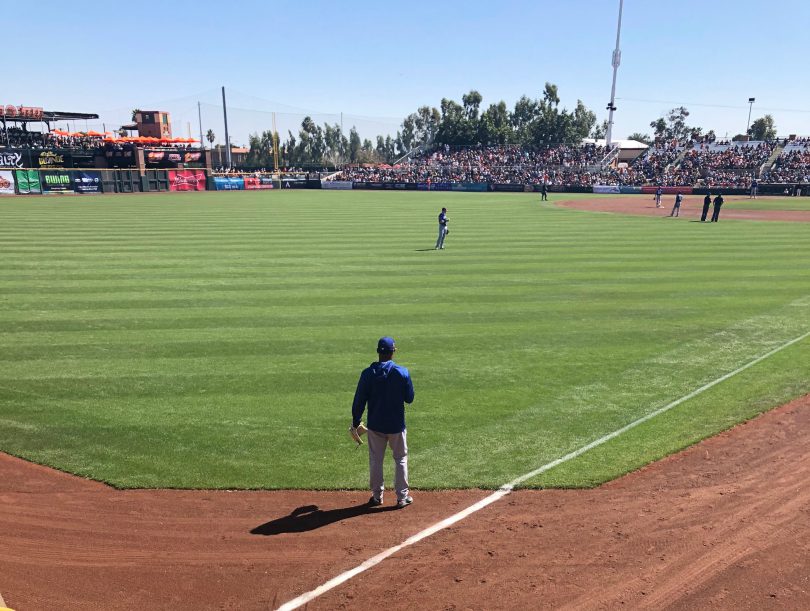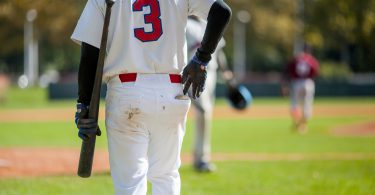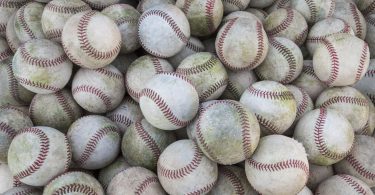Most baseball fans of all talents and ages would agree that there is nothing quite like a good game of catch. For the serious ballplayer, quality catch play carries different implications and importance. This article fits into a set of articles for aspiring college baseball players on the importance and structure of playing catch the right way.
Playing quality, focused catch is the quickest and best way to improve your defensive game because you can work on everything from body control and footwork to the transfer and actual throw itself. Think about how many throwing errors you made in the last year. Now what if you could cut that number down by a third or even half? Not bad, right? How much extra time would you put in to be able to do that? The best part is that you can cut down on these errors without spending any extra time at all. All it will take is a commitment to spending the time you currently use to get your arm loose more efficiently. When you throw to warm up, it tends to be rushed, sloppy, and lack focus. By thinking of catch play as the building block of defense and tightening up your catch play routine, you’ll stay focused, get more out of it, and see defensive improvement quickly.
Now this all probably sounds great, but you are likely wondering what you can change or do today to improve your catch play routine. We have detailed breakdowns with position-specific tasks for each position which can be found here, but for now we are going to start off by examining the Do’s and Don’ts of catch play. Many of the ideas discussed here are elaborated on in the Quality Catch Play articles, but this serves as a great introduction. Here’s where to start:
DON’T: Throw to warm-up (jump right into playing catch without properly warming up)
Do this: Warm-up to throw. Make sure you have properly warmed-up and prepared your body and arm to start throwing (stretched, band work, throwers 10, shoulder tube, etc.) before you jump right into playing quality catch. For some players, the warm-up and preparation time prior to starting to throw can be just as long as the time spent actually playing catch. You won’t regret this. As the building block of your defense, your catch play routine is too important to waste on warming-up. A proper warm-up prior to catch play should allow you to jump in and throw without having to baby your arm or worry about injury, two things that can negatively impact your throwing mechanics and intent.
DON’T: Talk while receiving or throwing the ball. You don’t have a conversation while catching or throwing in the game, so why would you do it in practice? The mental focus required to make each rep count goes out the window with talk. This can be a hard habit to break since it is tempting to talk with your friends during catch play.
DO this: Talk and provide feedback in-between throws or while you are stretching and warming-up to throw. Center your conversation around the task at hand, so you stay present and focused with your thoughts.
DON’T: Get lazy with your feet and body. Yes, it’s easy to catch the ball doubled over at the waist or by reaching far to the side, but there are far more productive ways to catch it while bettering your overall game.
DO this: Keep your feet and mind active. Force yourself to move to the ball and catch it in the center of your body or in a position optimal for the exchange. This will make adjusting to the ball second nature when it comes time to do so in the game.
DON’T: Tap your glove with the ball before throwing every single time. Yes, the glove pat allows you to build a comfortable rhythm and can be a useful tool for fielders in game, but you must be aware of building a habit of doing it. If the glove tap becomes a necessity before each throw, it can turn into a bad habit that is very hard to break. You want to be able to take the ball out of your glove and throw it so when you have a play that doesn’t allow time for a glove pat, you don’t do it as second nature. As long as you are aware of your glove tap/pat habits during catch play, you will be in good shape.
DO this: Focus on your transfer and building a rhythm with your feet and the tempo of your catch play. You don’t have to be playing quick catch, but you also don’t want to take forever before getting rid of the ball. Being aware of your exchange and rhythm habits will serve you well and prevent you from building negative habits.
DON’T: Pose with the ball before throwing it on every throw. Get in the habit of taking the ball out of your glove and throwing it in a fluid motion. Guys who pose before throwing often develop problems on throws when they have to rush.
DO this: As mentioned above, focus on the exchange/transfer of the ball out of your glove to your throwing hand and create a fluid rhythm with your feet and body. Work on different position-specific footwork on your throws and different arm actions and throws you will be required to make in game play.
DON’T: Just throw the ball to the vicinity of your partner. This is a disaster waiting to happen. In games, you have a specific target you want to hit and practice should be the same.
DO this: Pick out a specific target and work on throwing to it. Make it something small and see if you can consistently throw the ball where you want. Your throw provides tremendous feedback when you have a specific target in mind. It makes it easier to notice miss patterns (always missing arm side, for example) and will make your misses smaller. Alternate your target from throw-to-throw just as you do in the game. Right shoulder, left shoulder. Center chest, hat. Right hip, left hip. This will simulate different throw objectives, for example, a throw into the tag zone versus a throw to center chest on a force play.
DON’T: Step on the foul lines when you play catch or wear out the same patch of grass. This is one of the unwritten baseball laws. Tearing up the lines or wearing out the same patch of grass is bad on a number of levels. Just avoid this one or consult with your coach or groundskeeper for more.
DO this: Stay off the line and move around enough so you don’t kill the grass in the same spot completely.
These 7 Do’s and Don’ts should give you plenty to work on for now. For more KPB catch play resources, click here.







